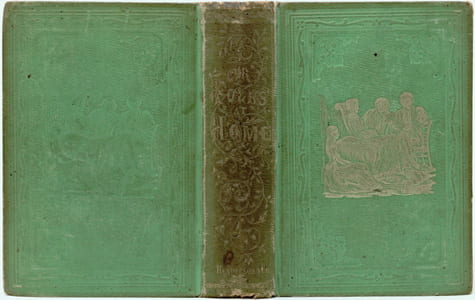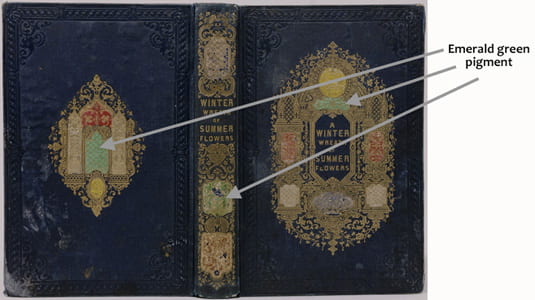

This growing list of known arsenical green bookbindings was initially based on emerald green, cloth-bound books discovered by the Poison Book Project; however, as analytical testing continues and other institutions contribute data, we have expanded the scope of the list to include any mass-produced, 19th-century* bookbinding that contains an arsenical green component. Please note that, while the use of potentially toxic artist pigments in book illustrations is well known, this database does not list illustrations within the textblock. This list tracks the use of heavy metal pigments in the binding components specifically. These components may include bookcloth, paper wrapping or covering, endpapers, paper labels or onlays, leather onlays, and textblock edges.

Emerald green leather onlay. Courtesy of the WUDPAC Study Collection.
In the 19th century, not every book from the same edition would have been bound identically.
Therefore, it is possible to have a book of the same edition listed below, but which does not contain an emerald green component.
